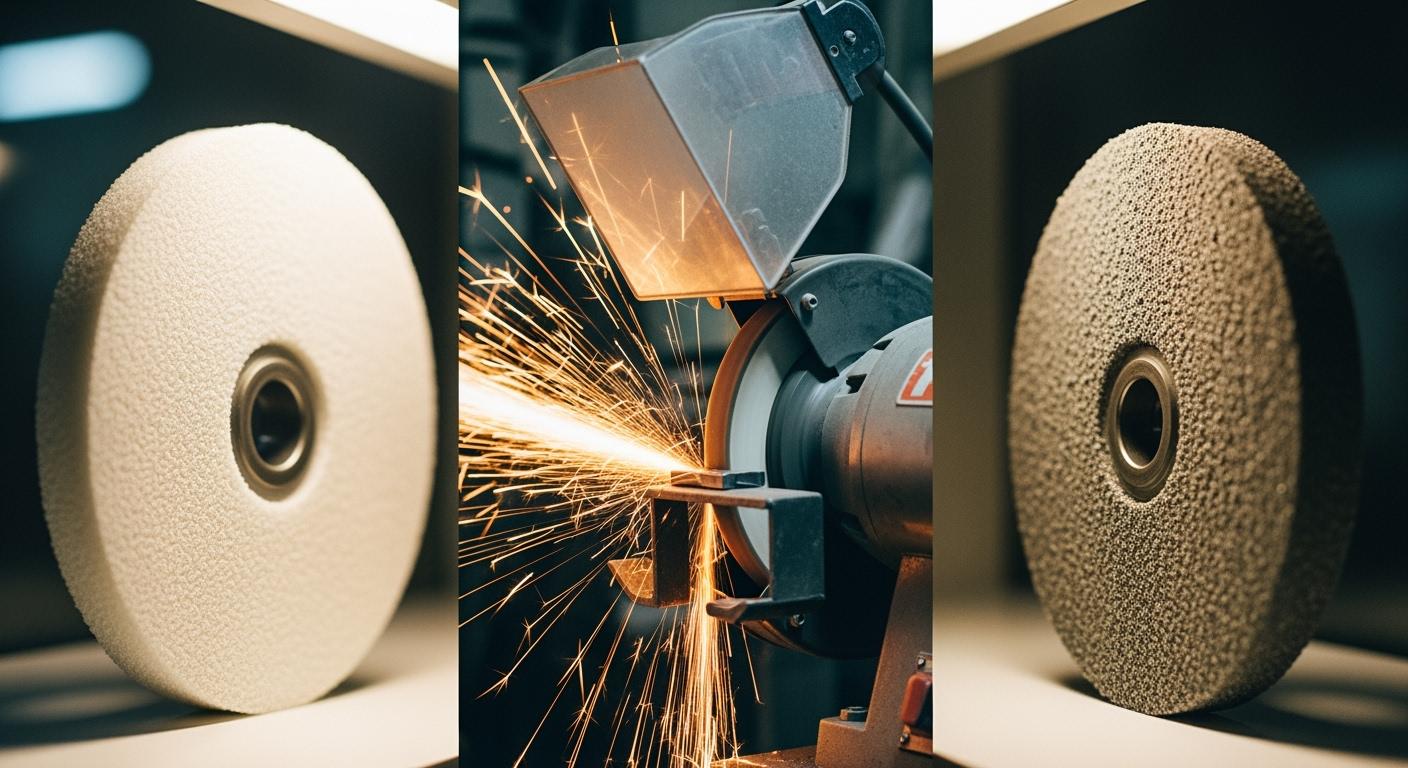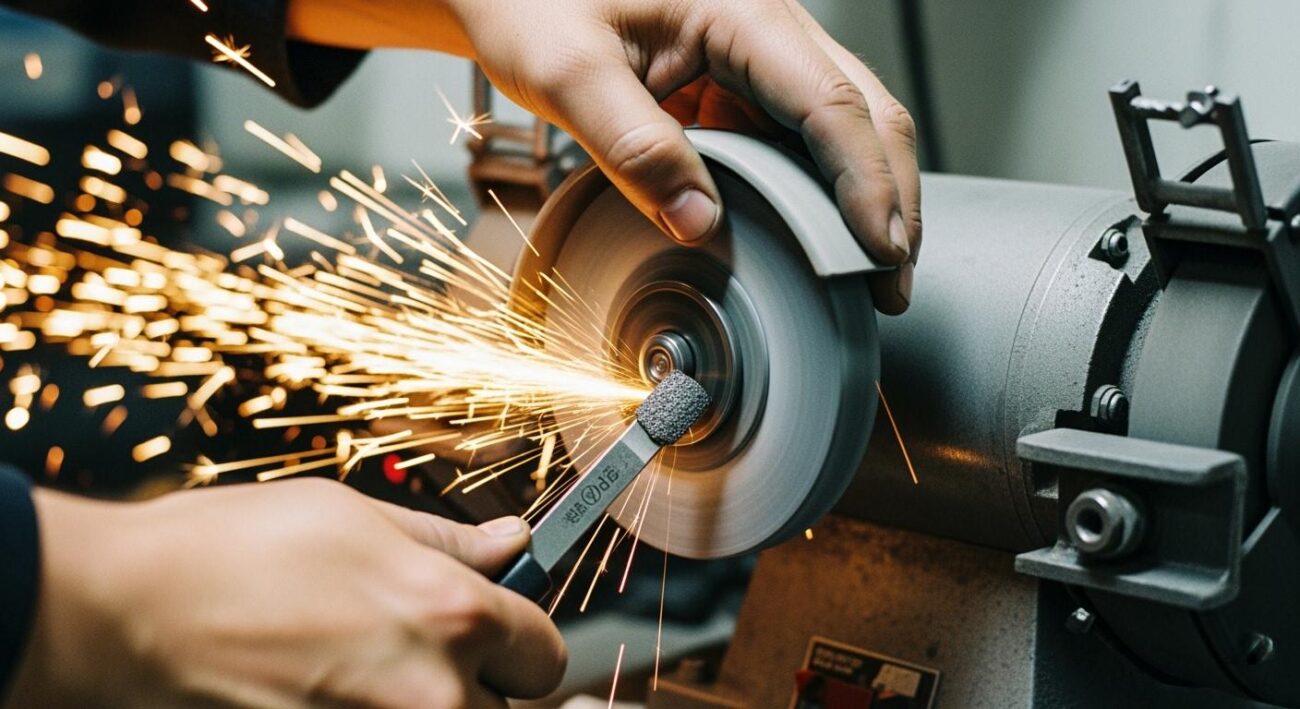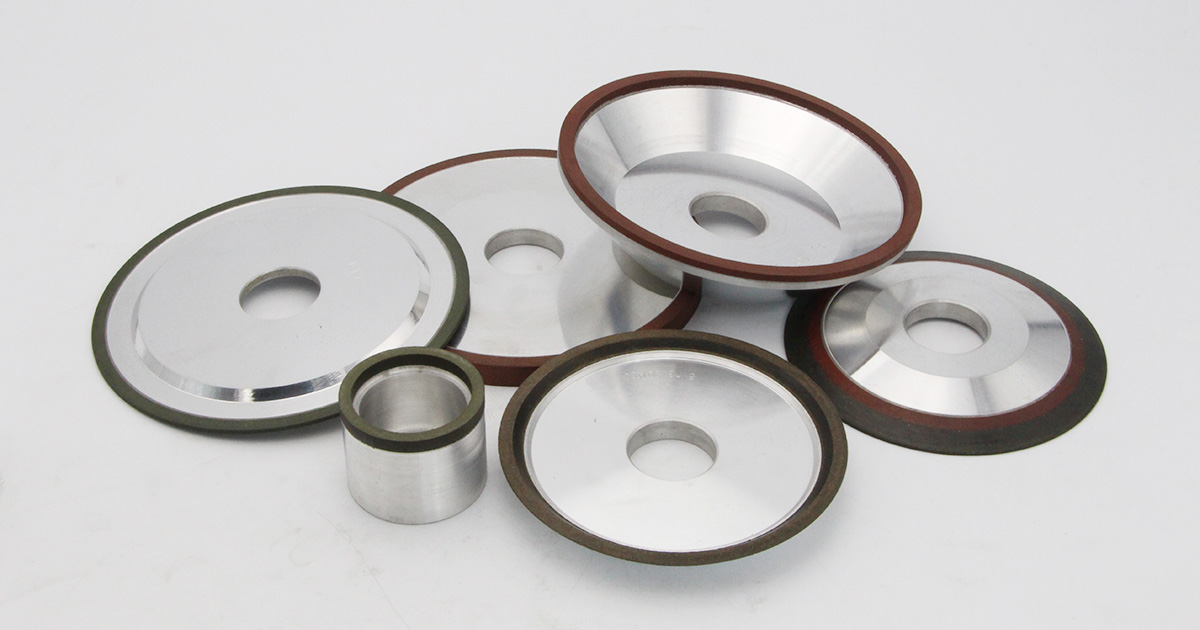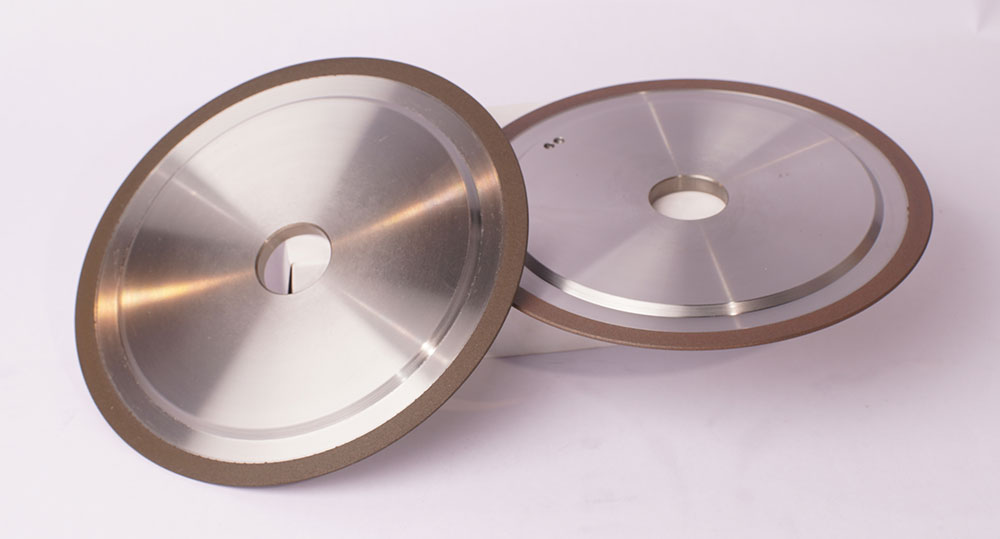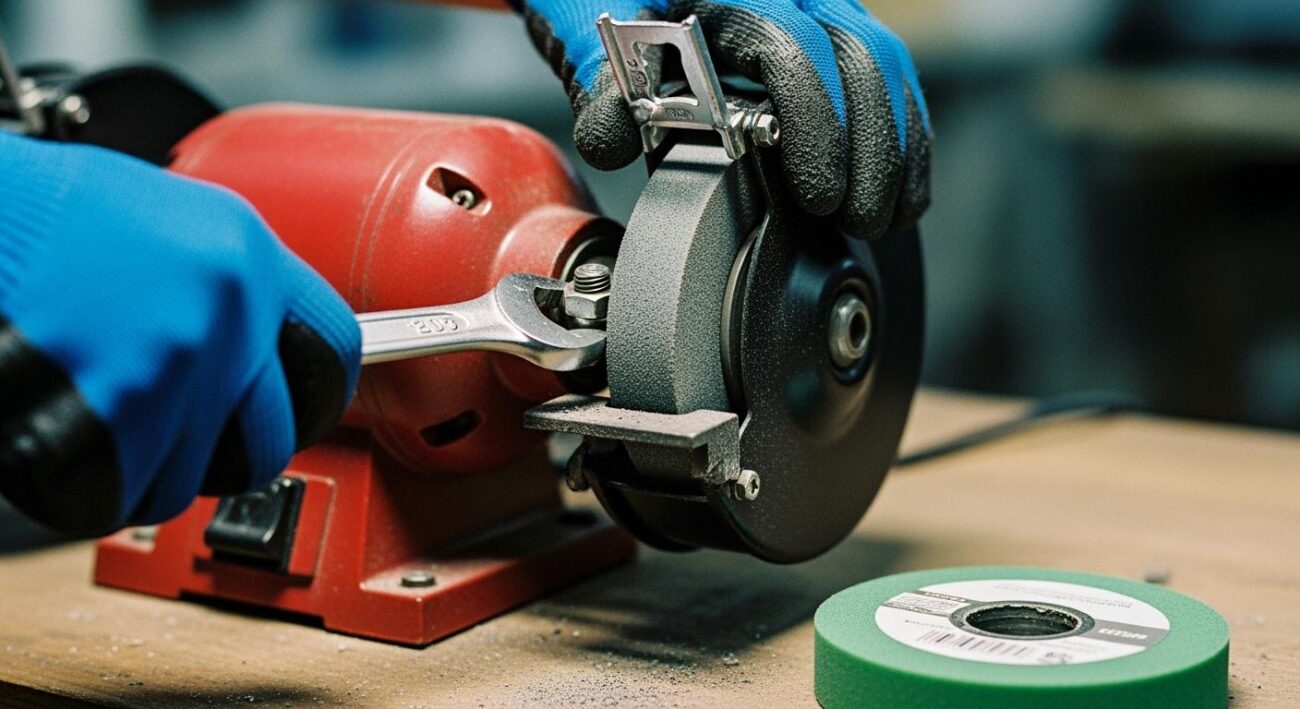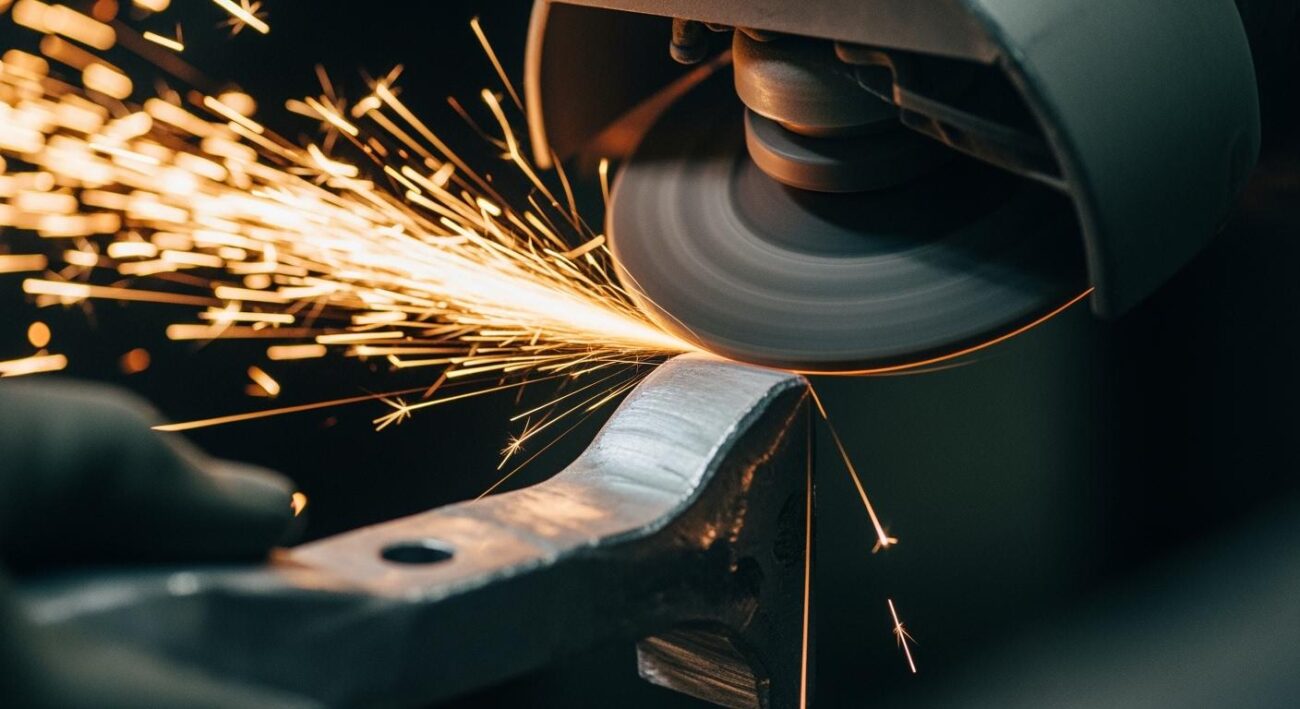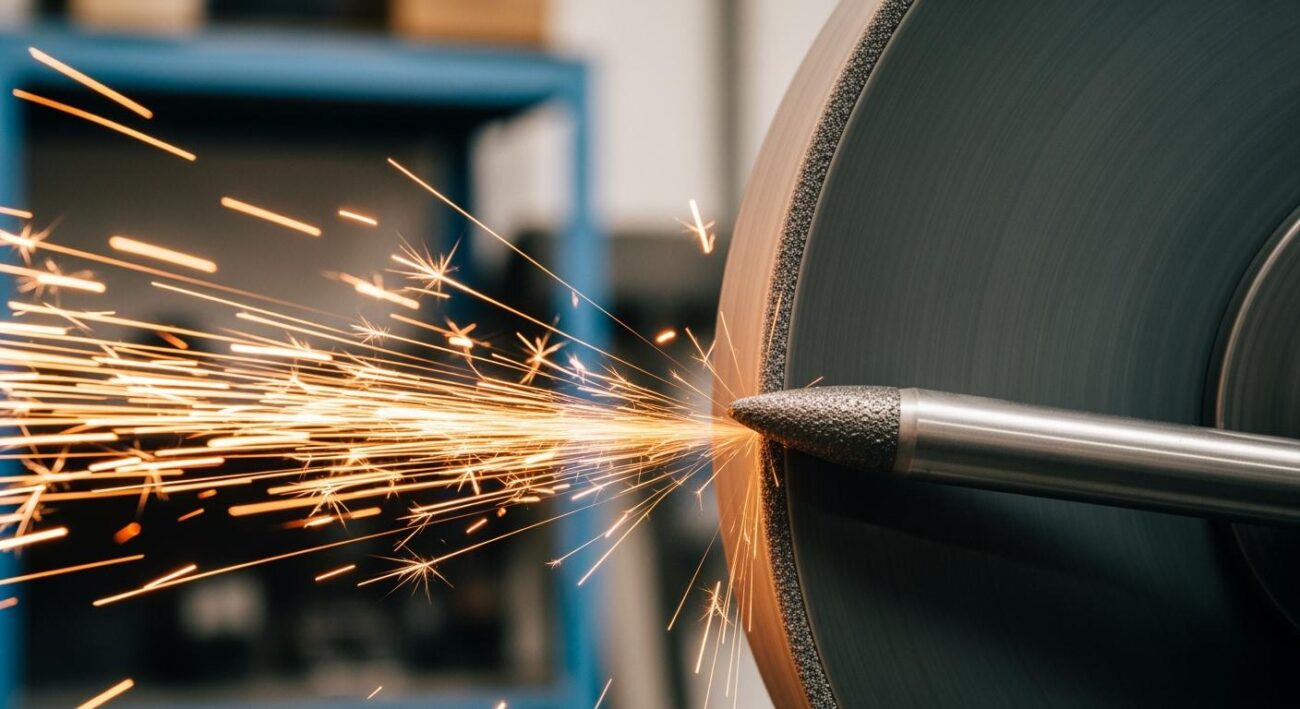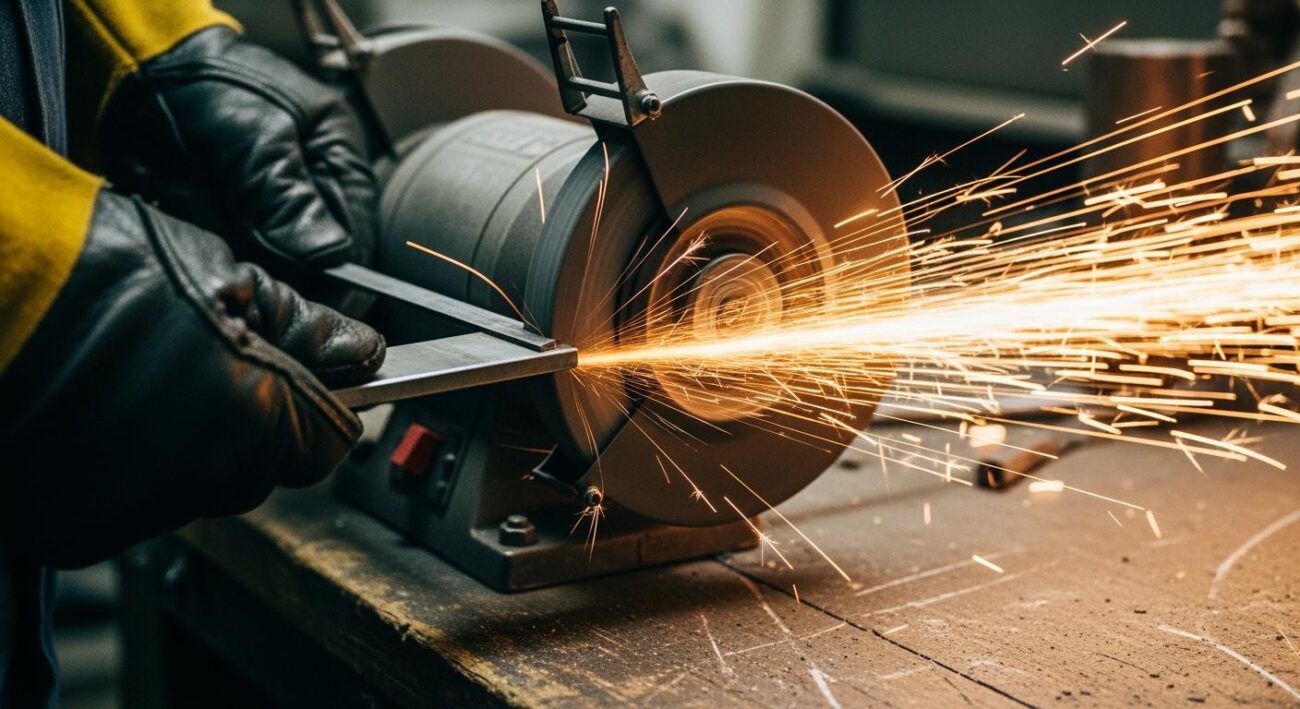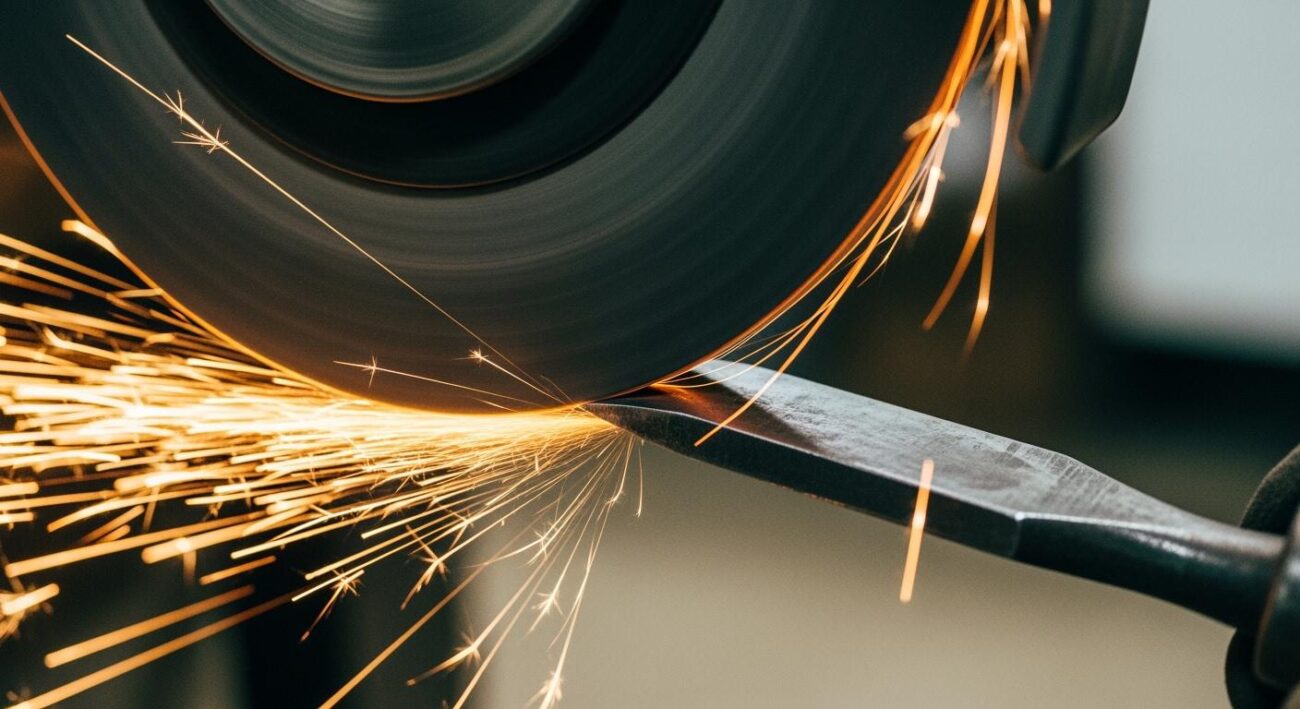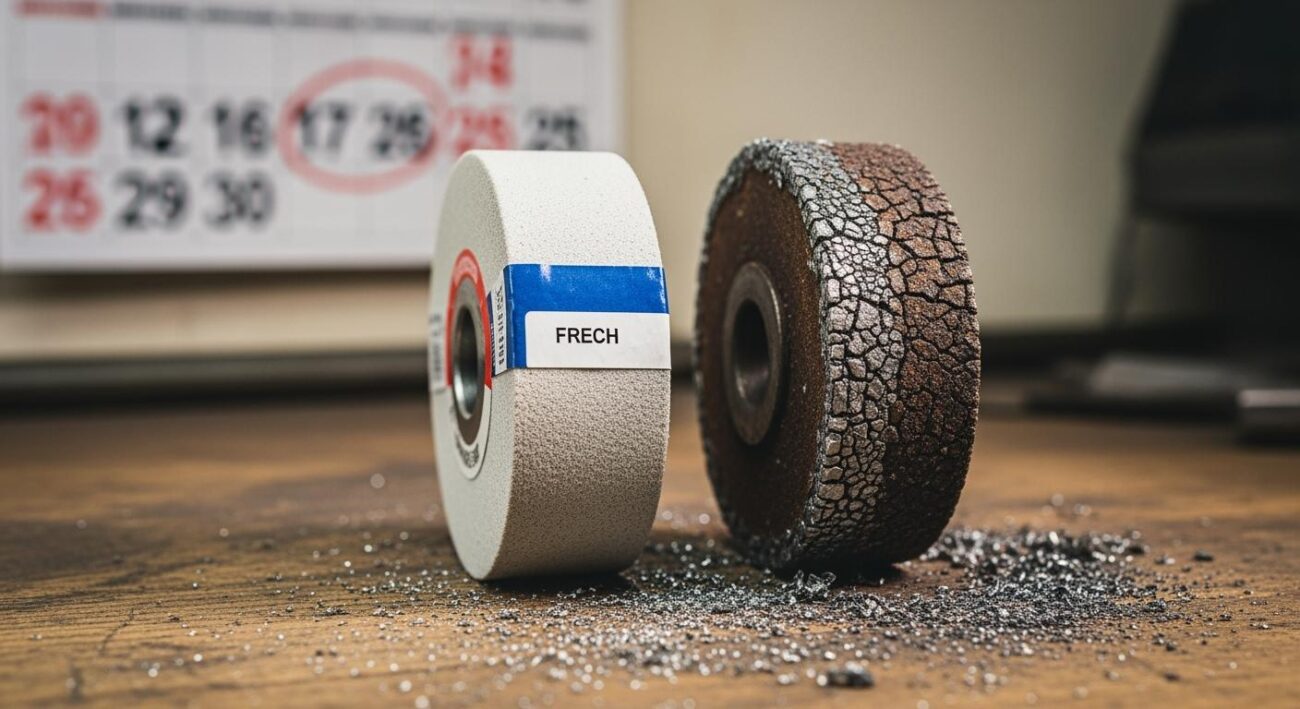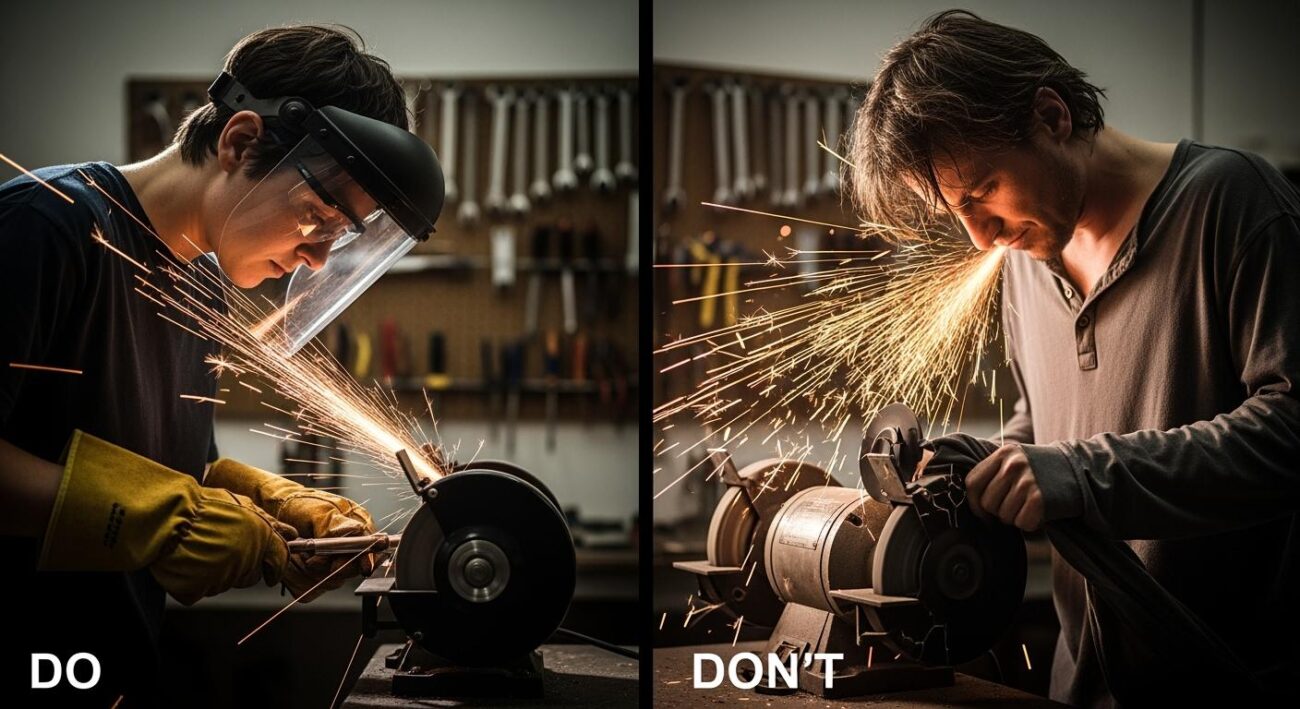As a grinding wheel wears, its diameter shrinks, which directly changes its performance. This process causes a decrease in wheel speed and creates a shorter contact arc with the workpiece. These physical changes result in a noticeable softening of the wheel, making the grinding wheel wear down even faster. Understanding this natural effect is the first step for operators to maintain consistent grinding efficiency and achieve high-quality results.
Key Takeaways
- A grinding wheel gets smaller as it wears. This makes it spin slower and touch the workpiece less. This causes the wheel to wear out even faster.
- A worn wheel cuts poorly. It can become smooth (glazed) or get clogged with metal bits (loaded). This means you need to clean it more often.
- A worn wheel can damage your workpiece. It can cause burns or make the surface rough. This means the final product will not look good.
- You can use special diamond wheels. These wheels last longer and cut better. They help keep your grinding consistent.
- Modern machines can help. They can keep the wheel spinning at the right speed. This makes the wheel work better for longer.
How a Grinding Wheel Wears: The Physics
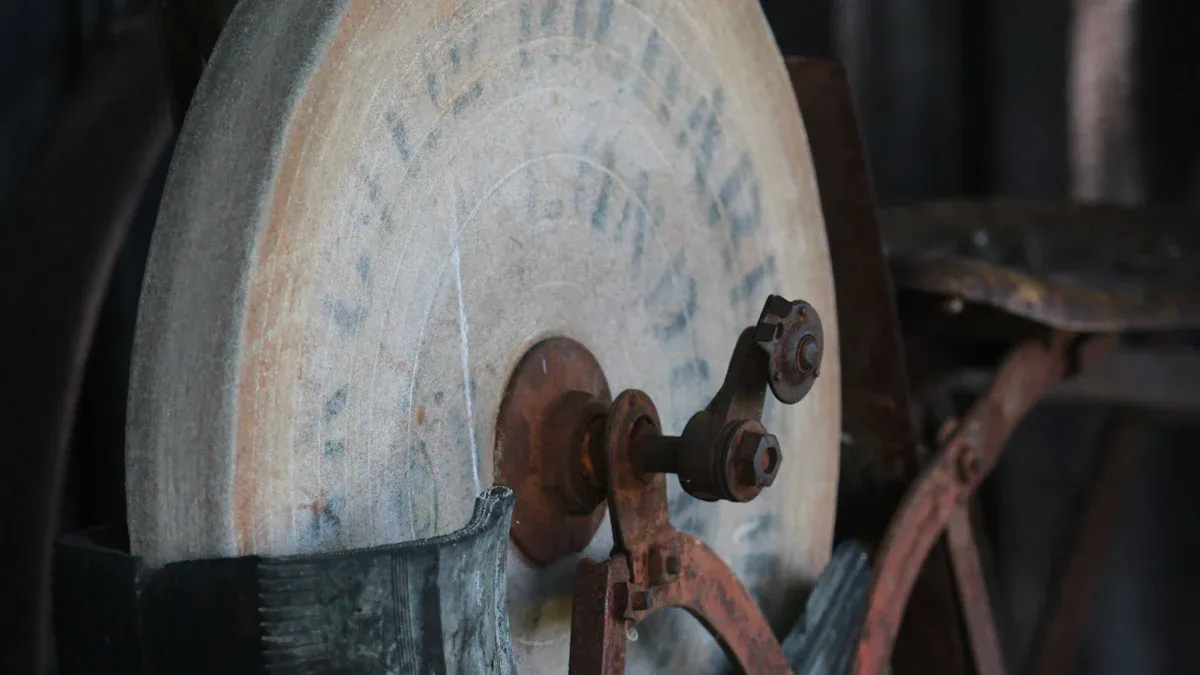
The way a grinding wheel wears is governed by straightforward physics. Two primary factors accelerate this process: a reduction in the wheel’s surface speed and a change in its contact area with the workpiece. Understanding these principles helps operators predict and manage wheel performance.
Reduced Surface Speed
The most significant change is the drop in surface speed. Operators measure this speed in Surface Feet Per Minute (SFPM). The formula for SFPM is simple: SFPM = 0.262 x Diameter x Spindle RPM. This shows that wheel speed is directly tied to the wheel’s diameter. When the machine’s spindle RPM remains constant, a smaller diameter automatically results in a lower wheel speed.
For example: A 25% reduction in the grinding wheel diameter causes a proportional 25% drop in SFPM.
This lower wheel speed forces each abrasive grain to remove more material with every rotation. The increased workload on each grain leads to faster breakdown and contributes to accelerated wheel wear. Maintaining a consistent wheel speed is crucial for stable performance.
Shorter Arc of Contact
As the grinding wheel shrinks, the length of the contact arc between the wheel and the workpiece also gets shorter. A smaller wheel creates a tighter curve, meaning fewer abrasive grains are engaged with the material at any given moment. This concentrates the total grinding force onto a smaller area, increasing the pressure on each individual grain. This higher pressure leads to several types of wear:
- Grain & Bond Fracture: The intense pressure can chip or completely break abrasive grains from the bond.
- Glazing: Grains do not fracture but instead become dull from friction, a process known as attritious wear. The wheel surface becomes smooth and loses its cutting ability.
- Wheel Loading: The pores of the wheel become clogged with grinding swarf (metal chips), preventing the grains from cutting effectively.
Performance Changes in a Worn Grinding Wheel
The physical changes a grinding wheel undergoes directly impact its cutting ability and overall efficiency. As the grinding wheel wears, operators will observe distinct shifts in wheel performance. These changes affect everything from the tool’s lifespan to the quality of the finished workpiece.
Faster Wheel Breakdown
A worn grinding wheel acts softer and breaks down more quickly. This happens for two main reasons. First, the reduced surface speed increases the workload on each abrasive grain. Second, the shorter arc of contact concentrates grinding forces on fewer grains. This combined stress causes the grains to fracture and pull out from the bond material more easily.
An Industry Rule of Thumb 📝
A drop of just 1,000 SFPM in surface speed can make a grinding wheel act one full grade softer. This accelerated breakdown means the wheel loses its shape and size at a much faster rate.
This accelerated wheel wear is a self-perpetuating cycle. As the wheel gets smaller, it acts softer, which in turn causes it to wear down even faster. This requires more frequent adjustments and replacements.
Increased Need for Dressing
A worn wheel quickly loses its cutting effectiveness due to glazing and loading, which increases the need for dressing. Dressing is a process that removes the outer layer of the wheel to expose fresh, sharp abrasive grains.
- Glazing occurs when the abrasive grains become dull and smooth from friction. The wheel’s cutting surface takes on a shiny, glossy appearance. This often happens when the wheel’s bond is too hard for the material or the wheel speed is too high. A glazed wheel rubs instead of cuts, generating excess heat.
- Loading happens when the pores of the wheel get clogged with grinding debris, or swarf. This is common when grinding soft materials like aluminum. A loaded wheel can be identified by visible bits of metal embedded in its grinding face.
Both conditions prevent the wheel from cutting properly and can lead to serious issues.
| Condition | Appearance | Primary Cause |
|---|---|---|
| Glazing | Shiny, smooth, glossy surface | Abrasive grains are dull |
| Loading | Pores are clogged with material | Debris is trapped between grains |
Dressing the wheel becomes essential to remove these loaded or glazed layers and restore its cutting ability.
Changes in Surface Finish
Ultimately, a worn grinding wheel compromises the quality of the workpiece. The condition of the wheel’s cutting face directly influences the final surface finish.
A dull, glazed, or loaded wheel creates more friction than it cuts. This can cause several surface defects:
- Burning: This thermal damage appears as discoloration on the workpiece. It can also alter the material’s hardness and create internal stresses that lead to distortion.
- Poor Surface Finish: When each abrasive grain removes larger, irregular chips, the result is a rougher surface. Studies show that reduced wheel wear is directly linked to an improved surface finish (a lower Ra value).
- Uneven Surfaces: A worn wheel may fail to remove unevenness from previous machining steps, sometimes leaving behind a deceptive mirror-like finish that hides poor geometry.
Maintaining a sharp, clean cutting surface is critical for achieving consistent, high-quality results and avoiding costly rework or scrapped parts.
Solutions for Consistent Grinding Performance
Operators can manage the effects of wheel wear and maintain consistent results. By combining advanced tools, modern machine features, and proper maintenance, it is possible to achieve stable and efficient grinding. Specialized providers like Aimgrind offer customized solutions to address these challenges head-on.
Using High-Performance Diamond Grinding Wheels
The first step toward consistent wheel performance is selecting the right tool. For grinding hard materials like ceramics or composites, high-quality tools such as Aimgrind’s diamond grinding wheels offer superior durability. Diamond is the hardest known substance, which allows it to maintain sharp cutting edges far longer than conventional abrasives.
These advanced wheels are engineered for a long wheel life.
- Strong Bonds: Metal or vitrified bonds create a powerful grip on the diamond grains, preventing them from pulling out under pressure.
- Built-in Porosity: Pores in the grinding wheel allow coolant to flow freely and help clear away chips, which prevents clogging and overheating.
This robust design resists the rapid breakdown that occurs as a wheel shrinks, ensuring more predictable results from start to finish.
Modern Machine Compensation
Modern CNC grinding machines offer a powerful solution to counteract the drop in surface speed. Many machines use a feature called Constant Surface Speed (CSS).
How CSS Works ⚙️
The machine’s control system automatically increases the spindle RPM as the wheel diameter gets smaller. This adjustment ensures the wheel’s surface speed (SFPM) remains constant throughout its usable life.
This automated compensation simplifies programming and optimizes machining time. It allows the grinding process to run at ideal parameters, leading to a more consistent surface finish and less stress on the tool.
Proper Dressing Techniques
Regular maintenance is essential for any grinding wheel. When a wheel becomes glazed or loaded, it needs to be dressed to restore its cutting ability. It is important to understand the difference between two key maintenance tasks:
| Task | Purpose |
|---|---|
| Truing | Restores the wheel’s geometric shape and ensures it runs balanced. |
| Dressing | Cleans the cutting surface and exposes fresh, sharp abrasive grains. |
Truing is done less frequently to correct the wheel’s shape. Dressing is a more common task performed whenever cutting efficiency drops. Proper dressing removes dull grains and clogged material, immediately improving the wheel’s ability to produce a high-quality finish.
As a grinding wheel wears, operators can manage the natural softening of the wheel. This process is not an obstacle. Advanced solutions like Aimgrind’s durable diamond grinding wheel extend tool life and improve workpiece quality, boosting productivity. Modern grinders also maintain a constant wheel speed. This precise wheel speed control prevents operational issues and increases output. Exploring customized solutions is a strategic move toward more efficient manufacturing as a grinding wheel wears.
FAQ
Why does a smaller wheel wear out faster?
A smaller wheel has a lower surface speed at a constant RPM. This forces each abrasive grain to do more work. The shorter contact arc also concentrates grinding pressure on fewer grains. This combined stress causes the wheel to break down more quickly.
What is the difference between dressing and truing?
Dressing and truing are two distinct maintenance tasks.
Dressing cleans the wheel’s surface to expose fresh, sharp grains for better cutting. Truing restores the wheel’s geometric shape, ensuring it is perfectly round and balanced for precise operation.
Are diamond wheels always the best choice?
Diamond wheels excel when grinding very hard materials. For materials like ceramics, hard alloys, and composites, Aimgrind’s diamond grinding wheels offer superior durability and a longer life. They resist the rapid wear that conventional wheels experience with these demanding applications.
How can operators fix a glazed grinding wheel?
Operators can restore a glazed wheel by dressing it. The dressing process removes the dull, smooth outer layer of the wheel. This action exposes the sharp, new abrasive grains underneath, immediately restoring the wheel’s ability to cut effectively and reducing heat generation.
See Also
Understanding CBN Grinding Wheels: Their Functionality and Operational Principles
Exploring Diverse Grinding Wheel Types and Their Real-World Uses
Selecting the Optimal Grinding Wheel Dresser for Your Specific Needs
Picking the Perfect Bench Grinding Wheel Material for Your Projects
Selecting the Ideal Grinding Wheel for Your Circular Saw Blade
Contact Us
For More Grinding Solution or Customized Abrasive Tools

